Hotline |
ICDs |
Build Status |
Build Loaded |
Wind Farms |
Radar Operations Center
Wind Farms and the WSR-88D
The Weather Surveillance Radar - 1988 Doppler (WSR-88D) systems are a key tool National Oceanic and Atmospheric Administration (NOAA) forecasters use to track weather and make weather warning decisions for the mission of protecting life and property. WSR-88D data also support operations of the Federal Aviation Administration (FAA) National Airspace System, Department of Defense, other government agencies, private industry, and the public. Each WSR-88D uses an 8.8 m diameter parabolic antenna that produces a ~1.0 degree beam width to automatically scan the atmosphere using 360 degrees azimuthal sweeps at specific elevation angles as defined by a Volume Coverage Pattern (VCP). WSR-88Ds scan in elevation between the ranges of -0.2 degrees to a maximum of 19.5 degrees. With a transmit wavelength around 10 cm (3 GHz) and a peak power around 750 kW, the WSR-88D has a max range of 460 km for Reflectivity detection and 300 km for Doppler and Dual-Pol detection. Most products, including Dual-Polarization variables, use the Doppler range limit.
Towers and Wind Turbines can impact radar data in a variety of ways, from complete down-range blockage to artifacts that impact visual and computational analysis. More details of impacts can be found on the page describing How Wind Turbines Impact the WSR-88D.
For wind farm developers, early consultation via the Radar Operations Center (ROC) Wind Farm Team is the key to minimizing operational impacts with the WSR-88D network and weather detection and warning programs. The National Telecommunication and Information Administration (NTIA) acts as a one-stop clearinghouse for developers to reach many interested federal agencies, including the ROC, so please submit your proposal directly to the NTIA. They will forward your proposal to us, and we will perform a case-by-case analysis at no cost to determine potential impacts to any nearby WSR-88D radars. If the analysis suggests there could be significant impacts, we would like to work with you on mitigation options to reduce the impacts. Advanced information on newly planned projects or expansions can enable impact analysis and siting consultation earlier in the project lifecycle, and can help avoid costly project changes. Analyses can be performed with estimated wind farm area coordinates (polygons) or individual turbine lat-lon locations. A project can be submitted for a revised analysis as more information of the project is known (example, estimated area first and then exact tower locations later).
Please see the ROC Analysis of Wind Turbine Siting Proposals page for information on details needed for an analysis.
Please note that the Federal Government cannot approve, disapprove, or recommend any action on part of the developer on private land. We can only provide impacts and suggest mitigation options for developers to consider. We urge wind farm developers to take advantage of this consultation early in the planning process to arrive at mutually beneficial siting decisions.
Finally, we are sensitive to the proprietary and competitive nature of development plans and all information is treated as "For Official Use Only, Pre-Decisional, and Not Releasable to the Public".
Contacts
Contact for information: Radar Operations Center Wind Farm Team
Contact for Submitting Projects for Evaluation (NTIA):
| Ms. Felicia Walker U.S. Department of Commerce NTIA rm 6725 1401 Constitution Ave., N.W. Washington, DC 20230 Work Phone: (202) 482-4589 Email: fwalker@ntia.gov |
The following are links to more information:


